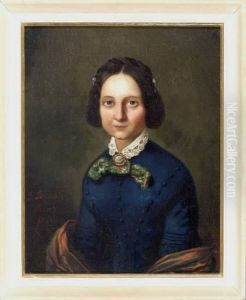Joseph Leiendecker Paintings
Joseph Christian Leyendecker, often referred to as J.C. Leyendecker, was an influential American illustrator whose work became synonymous with the American ideal at the turn of the 20th century. Born on March 23, 1874, in Montabaur, Germany, Leyendecker immigrated with his family to Chicago, Illinois, when he was eight years old. Showing an early talent for art, he studied at the Chicago Art Institute and later at the Académie Julian in Paris with his younger brother Frank. The experience in Paris exposed him to the works of some of the leading artists of the time, which influenced his development as a painter and commercial illustrator.
After returning to America, Leyendecker quickly became one of the most prominent commercial artists of his time. His relationship with the Saturday Evening Post began in 1899 and spanned over three decades, during which he created more than 320 covers for the magazine. His New Year's Baby and depictions of the fashionable American man and woman set the standard for stylishness in the pre- and post-World War I era. J.C. Leyendecker's illustrations defined the visual aesthetics of the nation's holidays and celebrations, creating images for Thanksgiving, Independence Day, and particularly Christmas, that became part of the American cultural lexicon.
Apart from his work for the Saturday Evening Post, Leyendecker was also successful in advertising. His most famous creation was the Arrow Collar Man, an advertising campaign for Cluett Peabody & Company's Arrow shirts. This series of advertisements not only influenced the fashion of the time but also contributed to Leyendecker's reputation as one of the most sought-after commercial artists.
Leyendecker's style was characterized by its bold lines, attention to detail, and a unique application of paint that gave his images a highly textured surface. He was a master of depicting fabric and clothing, which made his illustrations particularly appealing to the fashion sensibilities of his era. Despite his popularity, Leyendecker's career declined with the advent of new styles and the Great Depression. He continued to work, but with less frequency and visibility.
J.C. Leyendecker never married and lived with his brother Frank and Charles Beach, who was the original model for the Arrow Collar Man and Leyendecker's life partner. He died on July 25, 1951, at his estate in New Rochelle, New York. Although his fame was overshadowed by that of his protégé, Norman Rockwell, in the years following his death, Leyendecker has since been recognized as a key figure in American illustration, whose influence on advertising and design continues to be felt. His work has been reappraised and celebrated for its artistry and its pivotal role in shaping American visual culture.
